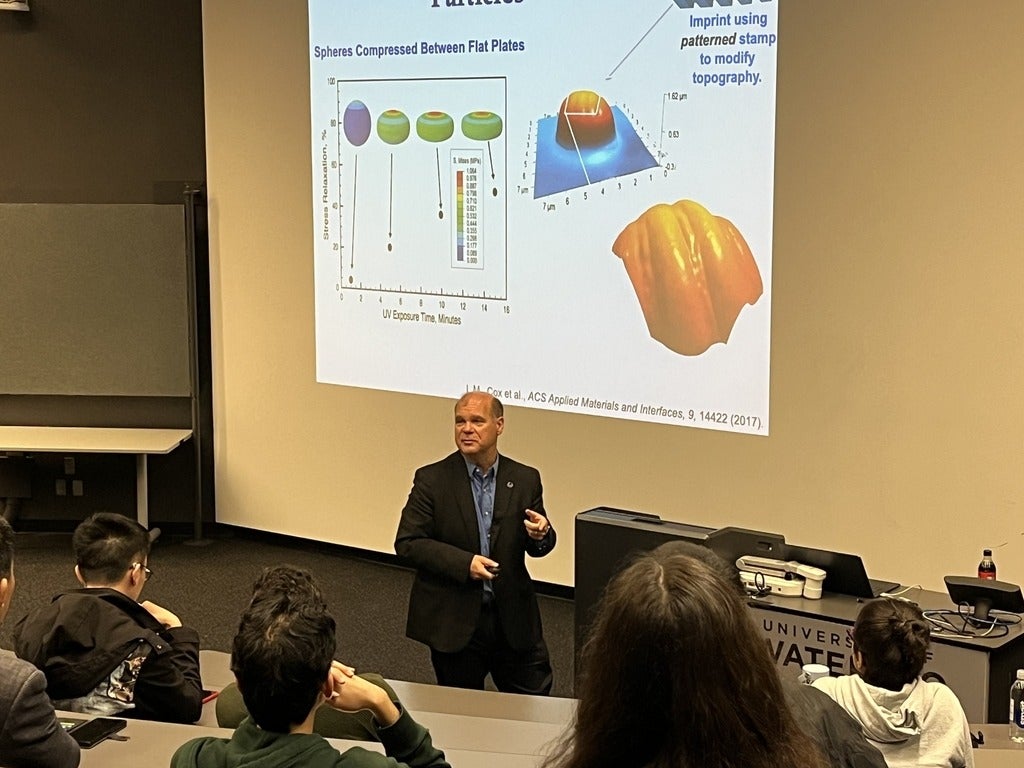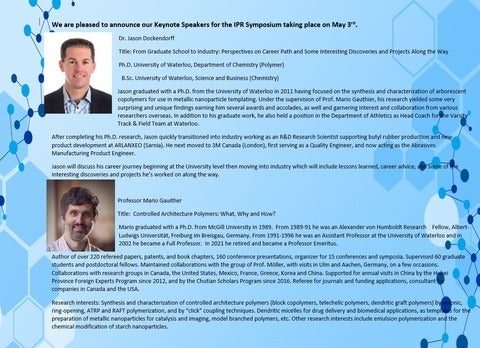The Institute for Polymer Research (IPR) held their annual Symposium event April 30th and May 1st. Over 75 students, industry members and academic members enjoyed over 30 scientific presentations during the two days.
The first day was marked by a robust schedule of presentations and discussions, highlighting the latest advancements in polymer science and its interdisciplinary applications. Attendees were treated to two keynote addresses. The first one was by Dr. Nicholas Lanigan from DAVWIRE, who shared his expertise on the “Formulation of Photocurable Resins for the Fabrication of Ferroelectrets.” The second one by Professor Megan Roberts of the University of Western discussed the topic of “Nanocellulose for Precision Applications: Combatting Challenges Using Intentional Surface Chemistry Design.” Many students took the opportunity to speak with both Keynote speakers after their talks to learn more and make suggestions about these interesting research topics.
We celebrated the two winners of the 2024 IPR Award of Excellence in Polymer science/Engineering. Both students gave a 20-minute presentation on their current research. Negin Bouzari from Professor Shahsavan’s lab shared her research on “Novel Small-Scale Robots for Medical Applications”. Yonglin Wang from Professor Li lab discussed the “Development of High-Performance Organic Cathode Materials Based on Coordination Polymers for Lithium-Ion Batteries”
Day two shifted focus to the academic core of the IPR itself, with a full schedule of presentations delivered by faculty and researchers from within the Institute. Professor Simon shared his research on industrial hemp with his presentation entitled “Industrial Hemp and Development of Sustainable Materials”. Professor Xianshe Feng presented his research on “Mass Transfer in Pervaporation, perstraction and Sorption- A Unified Approach”. Finally, Professor Tizazu Mekonnen shared his views on “Engineered Polysaccharides and the Modification of Polysaccharides and Poly(lactic acid) for Sustainable Multiphase Polymer Development.” These presentations were followed by a robust Q&A session leading to interesting discussions.
IPR Director Professor Jean Duhamel praised the symposium’s success, stating, that “this year’s turnout and the quality of research presented reflect the growing impact of polymer science in solving some of the most pressing challenges faced by society, particularly regarding the plastic waste crisis. We’re proud to foster a community where academic excellence and industry relevance go hand in hand.”
Plans are already underway for the 2026 gathering, with organizers aiming to expand participation and deepen engagement across scientific and industrial communities.
The 2025 IPR Symposium not only showcased innovation but also reaffirmed the importance of building bridges—between disciplines, between theory and practice, and between people from industry and academia committed to shaping the future through science.




